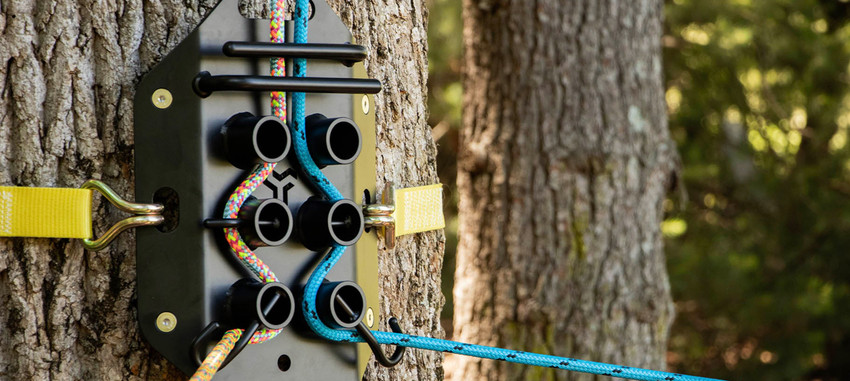Notch Six Pack – Behind the Design with inventor Terry Banyard
Sherrilltree Jun 12th 2025Join inventor Terry Banyard as he takes us behind the scenes of the Notch Six Pack—from concept to creation. In this video, Terry shares the inspiration, development process, and design thinking that led to the birth of the Notch Six Pack.
Video Transcript
Terry Barnyard:
I’m Terry Barnyard, and this is the Notch Six Pack.
The Six Pack is a new take on a lowering device. When I first came up with the idea, I literally had six empty beer cans on the bench. I drew around them, fed the rope between them, and thought: Is that going to work? Is that going to create friction? With those six cans sitting there, the name “Six Pack” just stuck.
Solving a Problem in Rigging
Back in 2012–2013, I wanted to design a device that had a slim profile—something that wouldn’t stick out from the tree—but more importantly, I wanted to solve a big problem: rope twist.
With a conventional device like a Port-A-Wrap, wrapping the rope around a bollard can cause twists and hockles. That creates issues for the ground crew—ropes jamming in the bollard or even dragging someone toward the tree. It’s not only inefficient, it’s a safety risk. You end up spending time walking the rope out several times a day just to untwist it.
The Six Pack addresses that. By running the rope through multiple paths rather than a full rotation around a single bollard, the design eliminates rope twist and the problems that come with it.
Building and Prototyping
I also wanted the Six Pack to be mounted firmly to the tree with a ratchet strap. Other devices flop around, making it hard to tension. When the Six Pack is strapped tight, it’s solid and predictable every time.
I started with basic sketches but quickly moved to hands-on prototypes. I wasn’t using CAD—I just welded parts together in the shop, experimenting with spacing, patterns, and configurations. Over the years, I’ve built 10–12 different prototypes. Some were modified again and again—cutting, re-welding, moving components—until the design worked in the field.
One of the early prototypes worked well enough to rig down an entire tree. That was the moment I knew the concept was solid. From there, I refined the size, weight, and friction levels until the design was compact but powerful.
Features of the Six Pack
-
Variable friction: You can start with a quarter-wrap for minimal friction on lightweight pieces, then build up to multiple wraps for maximum control. We’ve identified standard “friction patterns” that make it easy to see exactly how much friction you’re applying.
-
Easy to learn: Even new climbers and ground crew pick it up quickly because the rope path is visual and straightforward.
-
Dual rope capability: You can run a rope down each side for span rigging or cradling large sections. With two ropes controlled by two operators, you can balance pieces and lower them level—something other devices struggle to do.
Bringing It to Market
As the design came together, I realized I needed help getting it to market. I worked with Mike Story at TreeKit in the UK, who was developing a lot of arborist products at the time. He saw the potential in the Six Pack and really pushed me to pursue it further.
When TreeKit was acquired by Notch / ESG, the project became a natural fit. Notch has taken the design and elevated it with professional-grade manufacturing. The welding, fabrication, and overall build quality are far beyond anything I could have made on my own in the workshop.
The Result
For me, it’s amazing to see something that started as six empty beer cans and a scrap-metal prototype turn into a professional lowering device used by arborists everywhere. The Notch Six Pack is compact, predictable, reduces rope twist, and opens up new rigging possibilities.
It’s incredibly rewarding to know that crews around the world are using it to safely and efficiently rig down trees.

